There’s nothing like the anticipation of planting your garden and watching everything grow. But you can’t just plant willy-nilly – you have to prepare your garden properly first!
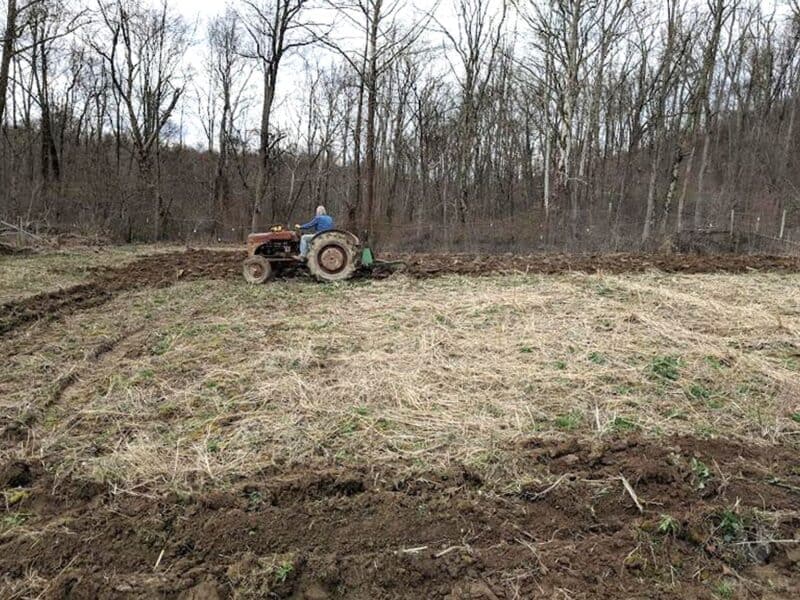
Here are a few tips to help get you started.
Get Rid of Any Messes, Debris, and Weeds
Any gardener will tell you that preparing your garden for planting is essential for a successful growing season.
The first step is to clear away any messes, debris, or weeds that may be present. This will give you a clean slate to work with and help prevent your plants from becoming infested with pests.
Once the area is clear, you can then get started with the rest of your garden prepwork.
Understand Your Soil Type
Before you can start planting your garden, it is important to take a moment to assess your soil. Different plants have different requirements, and what grows well in one type of soil may not do as well in another.
For example, sandy soil drains quickly and doesn’t hold onto nutrients well, while clay soil can be dense and difficult to work with.
By understanding your soil type, you can choose plants that are best suited to your particular growing conditions.
You can also take steps to improve your soil, such as adding compost or amending it with sand or grit if it is too dense.
With a little bit of preparation, you can ensure that your garden gets off to a great start.
Here’s a quick overview of the four most common soil textures.
Sand
Sandy soil is a type of light, dry soil that is composed of large particles. The pros of sandy soil include its drainage properties and its ability to warm up quickly in the spring.
The cons of sandy soil include its low fertility and its susceptibility to wind and water erosion.
Sandy soil is also known for being difficult to work with because it can quickly become compacted.
In general, sandy soil is best suited for plants that require well-drained conditions, such as cacti and succulents.
Loam
Loam soil is a type of soil that is made up of a combination of sand, clay, and silt particles.
This type of soil is prized by gardeners for its ability to retain moisture and nutrients, while also draining well. Loam soil is also relatively easy to work with, making it ideal for gardens and flower beds.
However, there are also some disadvantages to using loam soil.
One downside is that it can sometimes be too dense for root growth, which can lead to unhealthy plants.
In addition, loam soil can also be susceptible to compaction, making it more difficult for water and air to penetrate the ground.
Despite these drawbacks, loam soil remains the ideal soil type for gardeners just about everywhere.
Silt
Silt soils are fine-grained soils that consist of a mix of sand, clay, and organic matter. They are fertile and easy to work with, but they can also be susceptible to compaction and waterlogging.
Silt soils are often used in agriculture, as they provide good drainage and medium water-retention capabilities.
They can also be found in river deltas and other areas where sediments have been deposited over time.
Although silt soils are generally considered to be good for plant growth, there are some drawbacks that should be considered.
One is that silt particles are very small, which means they can be easily blown away by wind or washed away by rain. This can lead to soil erosion and loss of nutrients.
Another downside of silt soils is that they can compact easily, especially when wet. This can impede root growth and make it difficult for plants to take up water and nutrients.
Despite these drawbacks, silt soils remain a favored soil type for many gardeners and farmers due to their fertility and ease of cultivation.
Clay
Clay soil is a type of soil that is made up of very fine particles. It is known for being dense and sticky, and it can be difficult to work with. However, there are also some advantages to having clay soil in your garden.
One of the biggest benefits is that it holds nutrients well, which means that your plants will be able to access them more easily. Clay soil also tends to be very moisture-retentive, so it can be helpful in preventing drought conditions.
On the downside, clay soil can be difficult to aerate, and it can become very hard when it dries out. It can also be challenging to Dig planting holes in clay soil without the right tools.
Test the Soil
One of the most important aspects of successful gardening is knowing how to test your soil. This will give you vital information about the nutrients levels in your soil, as well as the pH level.
Without this knowledge, it can be difficult to ensure that your plants are getting what they need to thrive.
Fortunately, testing your soil is relatively simple and only requires a few supplies. The first step is to take a sample of your soil and place it in a clean container.
Then, you’ll need to add water and stir until the soil is completely saturated. After that, you’ll need to use a soil test kit to determine the nutrient levels and pH level.
With this information in hand, you’ll be able to make informed decisions about what amendments to add to your soil. This will help ensure that your plants have everything they need to grow healthy and strong.
Aside from soil texture (loam, clay, sand, silt, etc) you will also be examining the soil for nutrients levels and soil pH. Keep reading to learn more.
Soil pH
Although soil pH is not the only factor that determines plant growth, it is an important consideration when preparing your garden.
The optimal pH for most plants is between 6.0 and 7.0, but some plants (such as azaleas and rhododendrons) prefer a more acidic environment.
Fortunately, there are a number of ways to assess your soil pH. The simplest method is to use test strips, which can be purchased at most garden stores.
To use test strips, simply wet the strip with water and then insert it into the soil. After a few minutes, the strip will change color, indicating the pH of the soil.
For a more accurate reading, you can also send a sample of your soil to a laboratory for testing. Most cooperative extension offices offer this service for a nominal fee.
Once you know the pH of your soil, you can take steps to adjust it if necessary. For example, if your soil is too alkaline, you can add sulfur to lower the pH.
If your soil is too acidic, you can add lime to raise the pH. By taking the time to assess your soil pH, you can ensure that your plants get off to a healthy start.
Soil Nutrition
It’s also important to test your soil before planting to ensure that it has the right mix of nutrients for healthy plant growth. The three major nutrients plants need are nitrogen, phosphorus, and potassium.
Nitrogen is essential for leaf and stem growth, phosphorus helps with root development and flower production, and potassium aids in overall plant health.
As with soil pH, you can buy a soil test kit at most garden centers, or you can send a sample of your soil to a testing lab. Most kits will test for all three major nutrients, as well as other important factors like pH level and moisture content.
Once you know what nutrients your soil is lacking, you can take steps to amend the soil so it’s ready for planting. By taking the time to test your soil, you’ll set your plants up for success from the start.
Loosen the Soil
One of the most important steps in gardening is loosening the soil before planting. This allows roots to more easily penetrate the ground, leading to healthier plants.
There are a few different ways to loosen soil, including double digging, rototilling, and using a shovel or hoe.
Double digging is a labor-intensive process that involves digging a trench around the perimeter of the planting area and then turning over the soil to a depth of about two feet.
Rototilling is a quicker process that uses a machine to break up the soil.
For small gardens, a shovel or hoe can be used to loosen the soil manually. Whichever method you choose, loosening the soil is an essential step in creating a thriving garden.
One note – there are also no-till options if you’d rather not go through this effort. We’ll cover that in more detail below!
Remove Rocks and Debris
One important step in this process is removing rocks and debris from the area. Rocks can damage roots and prevent plants from getting the nutrients they need, while debris can harbor pests and diseases.
In addition, both rocks and debris can make it difficult for new seedlings to take root.
As a result, it is important to remove them before planting. This can be done by hand or with a tiller.
Whichever method you choose, taking the time to clear your garden bed of rocks and debris will pay off in healthy plants and a beautiful garden.
Add Organic Matter
Any gardener will tell you that healthy soil is the key to a thriving garden.
Not only does it provide nutrients and support for roots, but it also helps to regulate moisture levels and prevent weed growth. However, over time, soil can become depleted of essential nutrients, leading to unhealthy plants.
One way to restore the health of your soil is to add amendments. Amendments are materials that add nutrients or improve the structure of the soil. Some common amendments include compost and manure.
Another way to add organic matter is to till it into the soil or use it as a topdressing after you’ve planted. Whatever you choose, make sure your soil is nice and fertile before you plant.
Adding organic matter prior to planting will also help improve the soil structure and drainage.
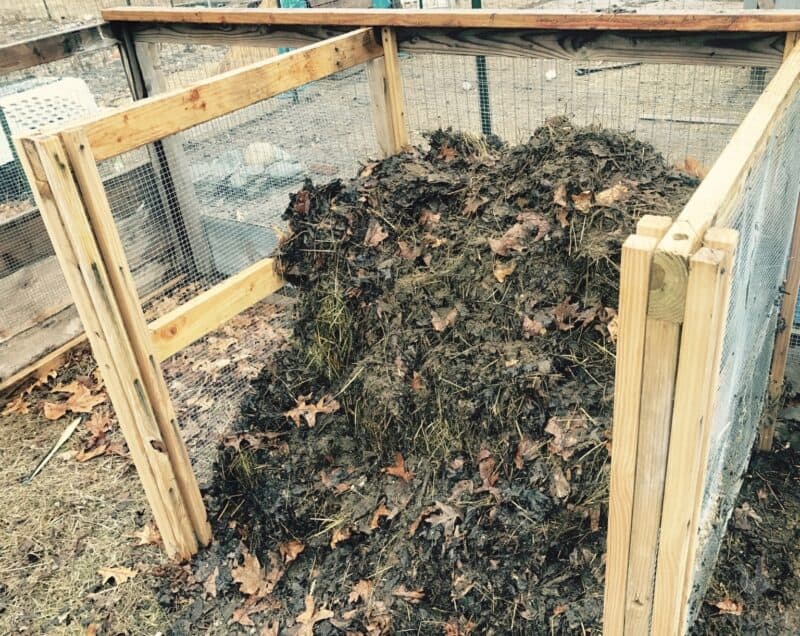
Compost
One way to help ensure that your soil is healthy is to add compost prior to planting. Compost is rich in essential nutrients, including nitrogen, phosphorus, and potassium, which can help to promote plant growth.
In addition, compost aids in water retention, helping to keep your plants hydrated during dry periods.
Adding compost to your garden soil is an easy way to give your plants a boost, and it can make a big difference in the overall health of your garden.
Manure
Adding manure to garden soil is a great way to improve its fertility and improve the yields of your plants.
Manure contains a range of important nutrients that can help to promote plant growth, including nitrogen, phosphorus, and potassium.
It also helps to improve soil structure, making it more friable and better able to retain moisture.
In addition, manure can help to increase the populations of beneficial microbes in the soil, which can further improve plant health.
Sawdust
Gardeners have long known the benefits of adding sawdust to their soil. Sawdust is an excellent source of carbon and helps to improve the structure of the soil, making it more porous and crumbly.
This in turn helps to improve drainage and prevents compaction. In addition, sawdust helps to retain moisture, making it an ideal amendment for sandy soils.
It also provides a slow-release source of nutrients for plants. Best of all, sawdust is inexpensive and abundantly available.
Whether you’re starting a new garden or simply looking to improve your existing one, adding sawdust to your soil is a great way to give your plants a boost.
Green Manure
Another option is planting green manure or cover crops. Cover crops are plants that are grown specifically to improve the soil.
They can add nutrients, increase organic matter, and help prevent weeds from taking over.
As a result, cover crops can have a big impact on the health of your garden. In addition, they can also help to prevent soil erosion.
Gypsum
Gypsum is a naturally-occurring mineral that can be beneficial to gardens and lawns. It is often used to improve the structure of sandy soil, making it more resistant to compaction and erosion.
Gypsum can also help to break up clay soils, improving drainage and aeration. In addition, gypsum provides nutrients that can help to improve the health of plants. It is especially beneficial for roses, tomatoes, and peas.
For best results, gypsum should be added to the garden soil prior to planting. This will give the roots time to assimilate the nutrients and improve the overall health of the plants.
How to Fix Different Soil Types
When you’re considering which kinds of amendments to add to your garden soil, think carefully about what kinds of deficits your soil has and what you can add to improve the soil. Here are some tips.
Sand
Anyone who has ever gardened in sandy soil knows that it can be a challenge to get plants to thrive.
Sand is lacking in many of the nutrients that plants need to grow, and it also drains quickly, making it difficult to retain moisture. As a result, sandy soil can often feel lifeless and unusable.
However, there are some steps that gardeners can take to improve the quality of sandy soil.
One method is to add organic matter, such as compost or manure. This helps to replenish nutrients and improve water retention.
Another approach is to cover the ground with a layer of mulch, which helps to prevent evaporation and keeps the soil cooler in summer. You can do both of these things prior to planting your garden.
Clay
While clay soil has some benefits – it’s high in nutrients and drains well – it can also be difficult to work with. Clay soil is very dense, making it hard for roots to penetrate, and it can quickly become compacted.
As a result, it’s important to take steps to improve clay soil before planting.
One way to do this is to add organic matter, such as compost or mulch. This will help to break up the clay and improve drainage.
In addition, it’s important to aerate the soil on a regular basis. This can be done with a garden fork or a small hand tiller.
Silt and Loam
Silt and loam soils are often thought of as the ideal type of soil for gardening. They are nutrient-rich, hold moisture well, and drain easily.
You shouldn’t have to do much in order to amend these soil types, but there’s nothing wrong with adding compost or another amendment if you want to improve the fertility and microbial activity in your soil.
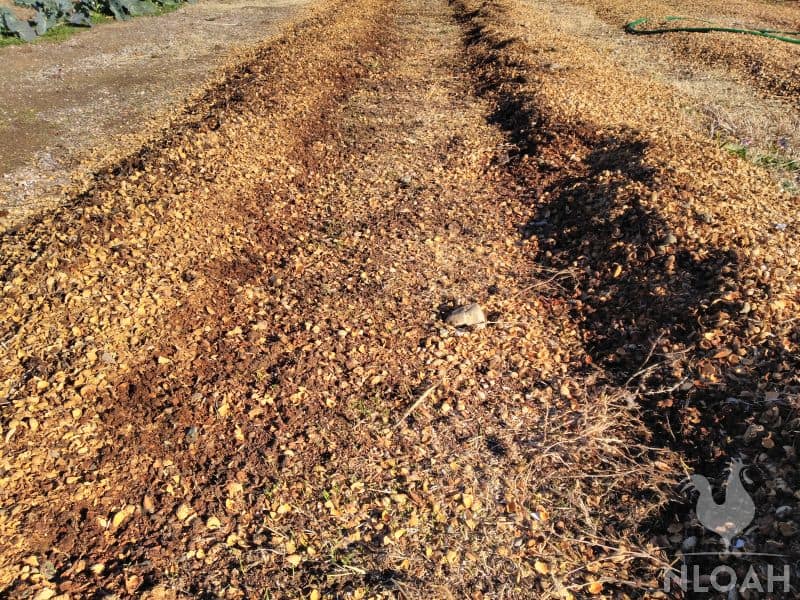
Consider a No-Till System
If you’d rather not till your garden, don’t worry – there are actually some benefits to doing this. The no-till system is a gardening technique that has a number of benefits.
First, it helps to improve the health of the soil by increasing its organic matter content.
Overtiling can cause the soil to become eroded and weak, and skipping this step can help it bounce back.
Second, it reduces the amount of time and effort required to prepare the garden bed for planting.
Third, it reduces the need for herbicides and other chemicals. Not tilling helps to improve water retention and reduce runoff, too. It also encourages beneficial insect activity.
Prepare the Rows or Build Raised Beds
Before you can start planting your garden, you need to prepare the space where you will be growing your crops.
One option is to simply till the soil and create rows for planting. This is a relatively easy process, but it does require some ongoing maintenance to keep the rows clear of weeds.
Another option is to build raised beds. Raised beds can be made out of a variety of materials, including wood, stone, and even recycled plastic.
They offer a number of advantages over traditional rows, including improved drainage and easier weed control.
Raised beds can also be filled with a more nutrient-rich soil mix, which can give your plants a boost as they start to grow.
Regardless of which option you choose, taking the time to prepare your planting area will help ensure that your garden is productive and thriving.
Warm the Soil (if Necessary)
Whether you’re planting a vegetable garden in the spring or flower seeds in the summer, you may need to warm the soil up before you get started.
One way to do this is to cover the area with black plastic for a few weeks prior to planting. The plastic will help to trap heat, making the soil more hospitable for seedlings.
Another option is to use a soil-warming cable, which can be buried a few inches beneath the surface. These cables emit heat, gradually raising the temperature of the soil. You can also warm up the soil by taking advantage of the sun’s rays.
Simply remove any mulch or debris from the area and let the sun’s rays bake the ground for a few days before you start planting. By taking these steps, you can give your plants a head start and ensure that they take root quickly and easily.
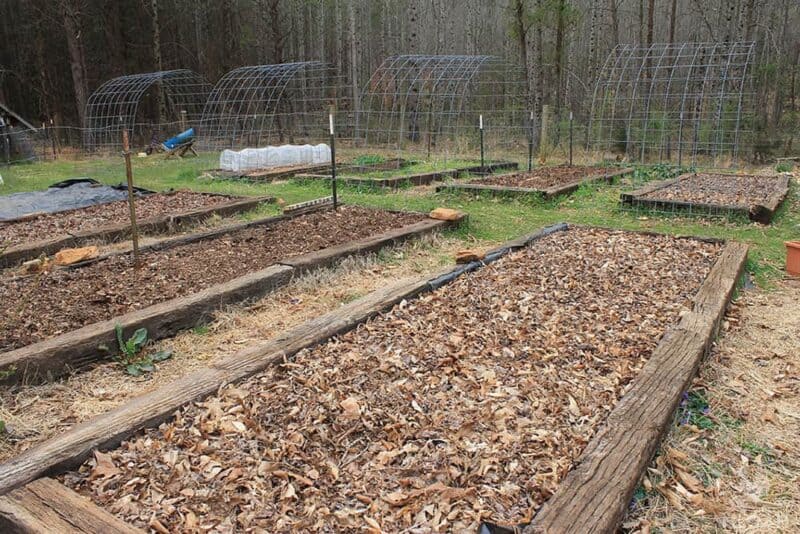
Add Mulch
As any gardener knows, mulch is an important part of a healthy garden. Mulch helps to regulate moisture levels in the soil, prevents weed growth, and provides essential nutrients for plant life.
One of the best times to add mulch to the garden is before you plant. This allows the mulch to settle into the soil and start working right away. There are a few things to keep in mind when adding mulch to the garden.
First, make sure that the soil is moist before you add the mulch. This will help the mulch to bed down into the soil more easily. Second, be sure to add a thick layer of mulch. A thick layer of mulch will provide the most benefit for your plants.
Finally, be sure to choose the right type of mulch for your plants. Depending on your plants, you may need a different type of mulch.
Plan Out the Garden and Irrigation Systems
Before you plant a garden, it is important to take the time to plan out the design and irrigation system.
This will help ensure that your plants get the water they need without over-watering or under-watering them.
It can be difficult to estimate how much water your plants will need, so it is important to create a system that can be adjusted as needed.
Planning ahead your garden will also help you avoid placing plants that require different amounts of water next to each other.
By taking the time to plan your garden before you plant it, you can ensure that your plants will have the best chance of thriving.
What Do I Need to Know Before Planting a Garden?
Before you can start planting your garden, there are a few things you need to take into account.
First, you need to choose the right location. The spot you choose should get plenty of sun and have well-draining soil.
Second, you need to select the plants you want to grow. Make sure to choose plants that are appropriate for your climate and that will thrive in the conditions you can provide.
Once you have decided on the location and plants for your garden, it’s time to start preparing the soil.
This may involve tilling, adding amendments, and other forms of preparation, depending on the condition of the soil, something we walked you through fully earlier in this post.
Once the soil is ready, you can finally start planting your garden. With a little planning and care, you can soon enjoy a bounty of fresh fruits, vegetables, and flowers.
Spring is a great time to start thinking about your garden and preparing it for planting.
By following these simple tips, you can ensure that your plants have the best chance of thriving and producing beautiful blooms or vegetables all season long.
Have you started preparing your garden yet? What are some of your favorite gardening tips?
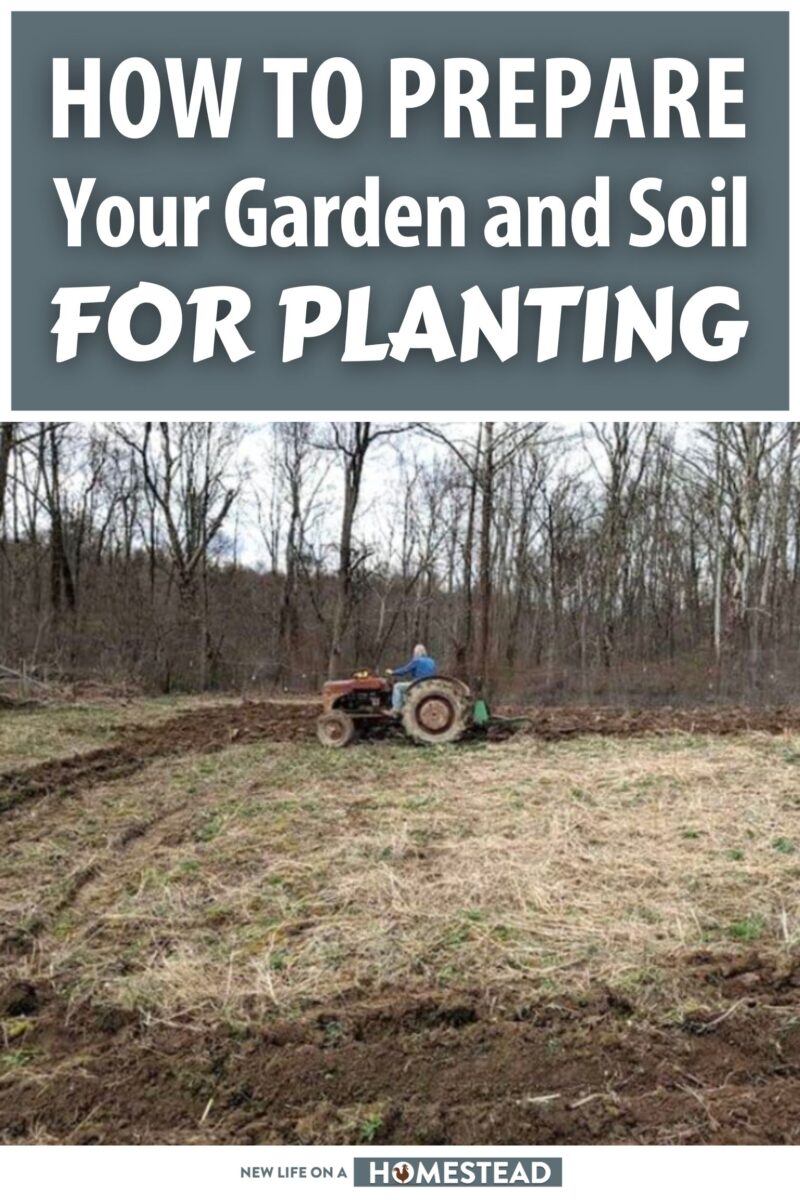

Rebekah is a high-school English teacher n New York, where she lives on a 22 acre homestead. She raises and grows chickens, bees, and veggies such as zucchini (among other things).
